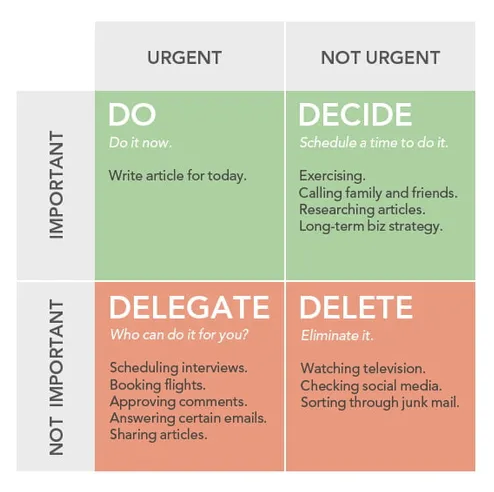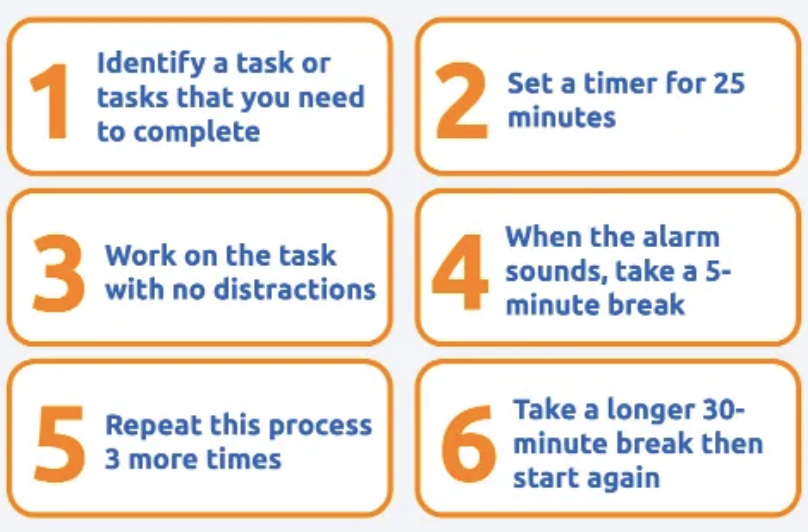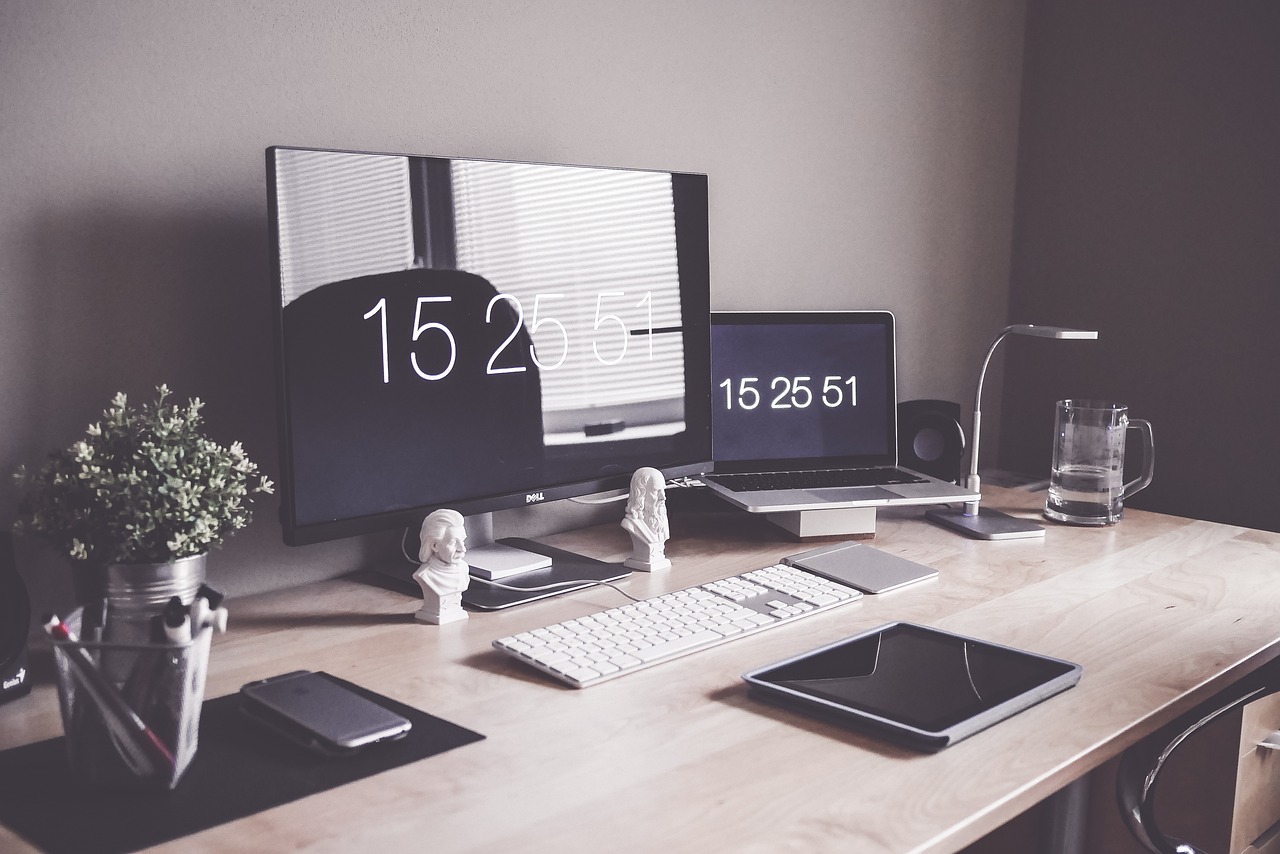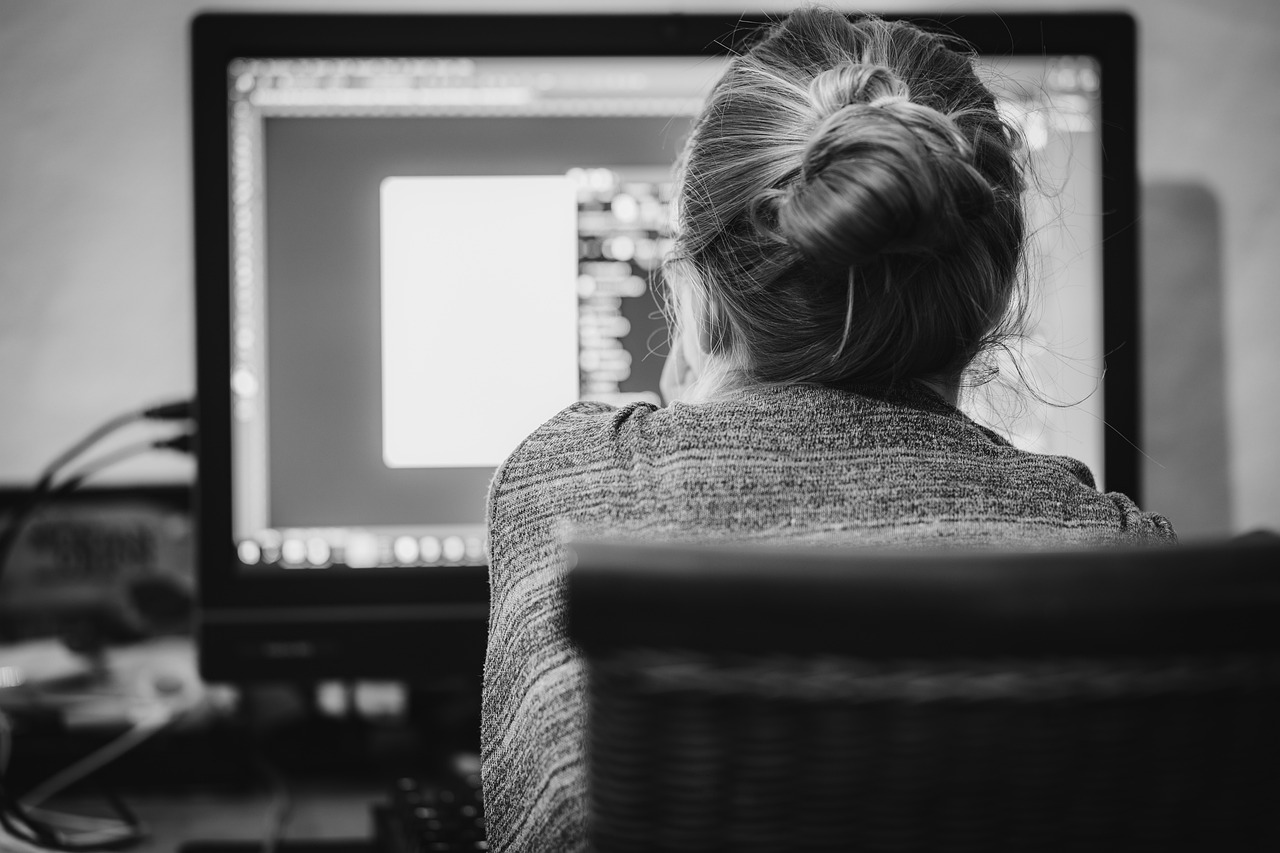8 Productivity Tips For Graphic Designers & Videographers
In an age where distractions abound and productivity seems ever-elusive, optimizing digital tools can drastically impact your efficiency.
For those in the design field, ensuring optimal software performance is critical. For example, regularly clearing the scratch disks in Photoshop can significantly speed up your workflow, preventing disruptive lags.
These eight strategies offer a robust foundation for professionals keen on maximizing their output and leaving an indelible mark in their industries.
Click on each corresponding link to jump ahead:
- Dive Deep into a Revitalizing Morning Routine
- Elevate Your Efficiency with the Eisenhower Box Strategy
- Harness the Power of the Pomodoro Technique
- Shape a Workspace that Echoes Order and Clarity
- Navigate and Neutralize Digital Diversions
- Champion the Pursuit of Relentless Learning
- Perfect the Delicate Dance of Delegation
- Periodically Pause to Ponder and Pivot
If you have any questions regarding productivity and how to increase it, contact us.
1. Dive Deep into a Revitalizing Morning Routine

Image by Iqbal Nuril Anwar from Pixabay
The start of your workday can significantly impact how the rest of your day unfolds. A strong morning routine acts as a guiding force, steering your day toward productivity and success. One of the foundational principles in productivity is recognizing the power of a mindful beginning. Mindfulness, in this context, serves as a crucial linchpin that grounds you in the present moment and establishes a focused intention for the hours that lie ahead.
Mindfulness: Setting the Tone
Mindfulness involves being fully present and engaged in the current moment without judgment. Incorporating mindfulness practices into your morning routine can help clear your mind, reduce stress, and boost your overall focus. Techniques such as meditation, deep breathing exercises, or simply taking a few moments to appreciate the quietude of the morning can work wonders. Starting your day with a clear and centred mind allows you to approach your creative tasks with enhanced clarity and enthusiasm.
Exercise: Energize Your Body and Mind
Physical activity is another pivotal element of a revitalizing morning routine. Engaging in regular exercise not only invigorates your body but also stimulates your brain. Physical activity releases endorphins, which are natural mood enhancers that can positively affect your outlook and creativity throughout the day. Whether it's a brisk walk, yoga session, or a quick workout, allocating time for exercise contributes to your overall well-being and mental agility.
Nutrition: Fuel for Success
A nutritious breakfast serves as the fuel that powers your productivity engine. Consuming a breakfast rich in essential nutrients provides your body and brain with the energy required for optimal functioning. Complex carbohydrates, protein, and healthy fats can provide sustained energy levels, helping you stay focused and attentive during your creative endeavours. Avoiding sugary and highly processed foods can prevent energy crashes and maintain your concentration over the course of the morning.
Overall, your morning routine plays a pivotal role in shaping your productivity as a graphic designer or videographer. By incorporating mindfulness, exercise, and a nutritious breakfast into your routine, you set yourself up for success. Starting your day with a clear mind, an energized body and the necessary nutrients ensures that you're equipped to tackle the challenges and creative tasks that lie ahead. Remember, your morning routine is the compass that guides your day's trajectory, so investing in it can lead to improved focus, creativity, and overall productivity.
2. Elevate Your Efficiency with the Eisenhower Box Strategy

In the dynamic world of graphic design and videography, where a multitude of tasks can clamour for your attention, the ability to discern which tasks truly require immediate action is essential. The Eisenhower Box methodology provides a refined perspective through which you can evaluate and categorize your tasks. By classifying tasks based on their urgency and importance, you can allocate your time and efforts more effectively.
Urgent and Important: Immediate Action
Tasks that fall into the quadrant of being both urgent and important demand your immediate attention. These are the high-priority tasks that directly impact your projects, deadlines, or client commitments. Prioritize these tasks and tackle them promptly. The Eisenhower Box helps you avoid procrastination and ensures that you're addressing critical matters head-on.
Important but Not Urgent: Future Focus
In the quadrant of importance but lacking urgency, you find tasks that contribute significantly to your long-term goals, projects, and creativity. These tasks might not require immediate attention but should be earmarked for subsequent action. This quadrant is often where strategic planning, project ideation, and skill development activities reside. Allocating time to these tasks can prevent last-minute rushes and foster proactive, well-thought-out work.
Urgent but Not Important: Delegate or Minimize
Tasks that are urgent but lack real significance might vie for your attention, diverting you from more valuable activities. It's essential to either delegate these tasks to others if possible or streamline your approach to minimize the time invested. Clearing these tasks efficiently allows you to reclaim time for endeavours that truly align with your creative vision and goals.
Not Urgent and Not Important: Eliminate or Limit
In the quadrant of tasks that neither demand immediacy nor carry substantial importance, lies the opportunity to free up valuable time. These tasks can often be eliminated altogether, outsourced, or relegated to low-priority slots. By minimizing the time spent on these tasks, you can allocate more energy to tasks that drive your creative projects forward.
In essence, the Eisenhower Box Strategy provides a comprehensive framework for making informed decisions about task prioritization. As a graphic designer or videographer, applying this methodology can lead to heightened efficiency, improved time management, and a more focused approach to your creative work. By consistently evaluating tasks based on their urgency and importance, you can ensure that you're devoting your energy to the tasks that truly align with your creative objectives and deliver the most value.
3. Harness the Power of the Pomodoro Technique

The Pomodoro Technique centers around breaking your work into manageable intervals, typically consisting of 25 minutes of concentrated work, known as a "Pomodoro," followed by a 5-minute break. After completing four Pomodoros, you take a longer break of around 15-30 minutes. This rhythmic alternation between focused work and short breaks is designed to align with the brain's natural attention span and energy levels.
Benefits for Graphic Designers and Videographers
- Enhanced Focus: The structured nature of the Pomodoro Technique helps train your brain to focus intensely during each 25-minute segment. This can be especially valuable for creative tasks like graphic design and videography, where deep concentration is essential.
- Combatting Procrastination: Knowing that a short, focused work period is followed by a break creates a sense of urgency and accountability. This can help minimize procrastination, as the time-bound nature of the Pomodoro Technique encourages you to start tasks knowing that you have a defined period of concentrated effort ahead.
- Preventing Burnout: Creative work can be mentally demanding, and continuously working without breaks can lead to burnout. The Pomodoro Technique encourages regular breaks, allowing you to recharge and maintain your creative energy throughout the day.
- Optimal Engagement: The rhythmic cadence of work and breaks fosters an optimal state of engagement. The Pomodoro Technique can help prevent mental fatigue and maintain a high level of enthusiasm and creativity as you tackle various tasks.
- Task Management: The Pomodoro Technique inherently encourages task segmentation. This can help you break down larger projects into manageable chunks, making them feel less overwhelming and more achievable.
Adapting the Technique
While the standard Pomodoro interval is 25 minutes, you can adjust the durations to suit your preferences and workflow. Some people find that they can maintain focus for longer periods, while others might prefer even shorter intervals. Experimentation can help you find the balance that works best for you.
In conclusion, the Pomodoro Technique offers a structured and effective approach to managing your time and maintaining focus in the world of graphic design and videography. By breaking your work into focused intervals and incorporating regular breaks, you can optimize your attention, creativity, and productivity, leading to more efficient and fulfilling workdays.
4. Shape a Workspace that Echoes Order and Clarity

The workspace you inhabit has a profound impact on your productivity, creativity, and overall well-being. Designing a workspace that reflects organization, clarity, and comfort can significantly enhance your ability to produce high-quality work consistently.
Creating an Optimal Workspace
- Order and Organization: An organized workspace is essential for efficiency. Designate specific areas for different tasks and ensure that everything has its place. Use storage solutions like shelves, drawers, and containers to keep your tools, materials, and documents organized and easily accessible.
- Ergonomic Comfort: Hours of creative work can take a toll on your body. Invest in ergonomic furniture such as an adjustable chair, a desk at the right height, and proper lighting to prevent strain and discomfort. Ergonomic considerations can have a positive impact on your physical health and productivity.
- Minimize Distractions: Keep your workspace clutter-free to reduce visual distractions. Remove items that don't contribute to your work or creative process. Additionally, consider noise-cancelling headphones or background music to help maintain focus in a potentially noisy environment.
- Tools at Arm’s Reach: Arrange your tools and equipment in a way that allows you to access them without interruption. This minimizes the need to constantly search for items and helps you maintain a smooth workflow.
- Personal Touches: While order and functionality are important, personal touches can also boost your mood and creativity. Decorate your workspace with items that inspire you, whether it's artwork, motivational quotes, or plants. A pleasant atmosphere can contribute to a positive mindset.
- Tech Setup: Given the digital nature of graphic design and videography, ensure that your technology is up-to-date and seamlessly integrated into your workspace. Calibrate your monitors for accurate colour representation, optimize your computer's performance, and organize your digital files effectively.
Benefits of an Organized Workspace
- Enhanced Focus: A clean and well-organized workspace reduces distractions, allowing you to concentrate fully on your creative tasks.
- Efficient Workflow: With tools and materials within arm's reach and a streamlined setup, you can work more efficiently and transition between tasks smoothly.
- Boosted Creativity: A visually pleasing and comfortable environment can stimulate creativity and encourage innovative thinking.
- Reduced Stress: An organized space reduces mental clutter and promotes a sense of calm, leading to reduced stress levels.
- Professional Image: If your workspace is part of client interactions, an organized and professional-looking space can contribute to a positive impression.
In summary, crafting a workspace that embodies order, clarity, and comfort is a strategic investment in your productivity and creative output. By optimizing your environment for focus, minimizing distractions, and ensuring ergonomic support, you create a space that empowers you to produce your best work consistently as a graphic designer or videographer.
5. Navigate and Neutralize Digital Diversions

In a world dominated by technology and constant connectivity, managing digital distractions is crucial for maintaining focus and productivity. Graphic designers and videographers, whose work often requires deep concentration and creative thought, can benefit significantly from adopting strategies to tame the digital cacophony.
Designating Distraction-Free Periods
- Scheduled Email Checks: Instead of being constantly at the mercy of email notifications, designate specific times throughout the day to check and respond to emails. This prevents email interruptions from disrupting your workflow and allows you to maintain control over your schedule.
- Limited Social Media Interaction: Social media platforms can be a major source of distraction. Allocate specific intervals during your workday for checking and engaging with social media. This prevents impulsive visits and ensures that your social media usage remains intentional and focused.
Utilizing Productivity Tools
- StayFocused and Similar Tools: Applications like StayFocused (browser extension) or other website blockers can help limit your access to time-wasting websites during designated work periods. These tools enable you to stay on track by preventing you from mindlessly browsing the internet.
- Notification Management: Smartphones are notorious for stealing our attention with constant notifications. Disable non-essential notifications during work hours to create a distraction-free environment. This helps preserve your focus and productivity while working on creative tasks.
Benefits of Managing Digital Distractions:
- Improved Focus: By minimizing digital interruptions, you can maintain longer periods of focused attention on your creative projects, which is essential for achieving quality results.
- Enhanced Creativity: Uninterrupted work allows your mind to delve deeper into creative processes and come up with innovative ideas.
- Time Management: Managing digital distractions ensures that you're using your time effectively and efficiently, without falling into the trap of endless scrolling or checking emails too frequently.
- Reduced Stress: Constant notifications and distractions can contribute to stress and a feeling of being overwhelmed. Controlling these distractions can lead to a calmer and more enjoyable work experience.
- Increased Productivity: Over time, managing digital distractions can significantly boost your overall productivity by maximizing the time you spend on meaningful tasks.
In conclusion, mastering the art of navigating and neutralizing digital distractions is a valuable skill for graphic designers and videographers. By setting boundaries around email and social media, using productivity tools, and managing smartphone notifications, you can create an environment that supports your creative work and empowers you to be more productive and successful in your professional endeavours.
6. Champion the Pursuit of Relentless Learning

In the dynamic realms of graphic design and videography, embracing a mindset of continuous learning is not only advisable but necessary to thrive in an ever-changing landscape. Staying ahead of industry shifts and acquiring new skills ensures that you remain adaptable, competitive, and at the forefront of creative innovation.
The Significance of Lifelong Learning
- Industry Evolution: Technology, design trends, and tools are constantly evolving. Stagnation in your skill set can lead to becoming outdated and less relevant in a competitive industry. Continuous learning allows you to ride the wave of these changes rather than being swept away by them.
- Skill Enhancement: Learning new skills or refining existing ones can significantly enhance your creative output. Whether it's mastering a new software, exploring different artistic techniques, or understanding emerging design principles, each addition to your skill set broadens your creative toolkit.
- Adaptability: The ability to adapt to new challenges is a hallmark of successful professionals. Learning keeps your mind flexible and open to change, enabling you to pivot and seize opportunities that arise.
- Inspiration: Learning can fuel inspiration. Exploring new concepts and ideas from various sources can ignite fresh creativity and encourage you to experiment with novel approaches in your work.
Practical Approaches to Continuous Learning:
- Online Courses: Platforms like Udemy, Coursera, and LinkedIn Learning offer a wide range of courses on graphic design, videography, and related fields. These courses allow you to learn at your own pace and on topics that align with your interests.
- Workshops and Seminars: Attending workshops, seminars, and conferences—whether in-person or virtual—provides the opportunity to learn from industry experts, network with peers, and gain insights into cutting-edge techniques and trends.
- Networking: Engage with online communities, forums, and social media groups dedicated to graphic design and videography. Sharing experiences, seeking advice, and learning from others' successes and challenges can be immensely valuable.
- Hands-On-Projects: Embark on personal projects that challenge you to apply new skills. Whether it's experimenting with a different design style or exploring a new video editing technique, hands-on experience solidifies your learning.
Benefits of Relentless Learning:
- Competitive Edge: Continuous learning keeps you ahead of the curve, positioning you as a sought-after professional in a competitive field.
- Relevance: Staying updated with industry trends ensures that your work remains relevant and aligned with current market demands
- Confidence: Acquiring new skills or knowledge boosts your confidence in tackling diverse projects and client requests.
- Innovation: Exposure to new ideas and practices can spark innovative thinking and lead to groundbreaking creative solutions.
- Professional Growth: Embracing learning demonstrates a commitment to your craft and can lead to expanded career opportunities.
In conclusion, adopting a mindset of relentless learning is a strategic investment in your long-term success as a graphic designer or videographer. By consistently seeking out opportunities to learn and grow, you position yourself to thrive amidst industry changes, elevate your creative capabilities, and continuously deliver exceptional work to clients and audiences alike.
7. Perfect the Delicate Dance of Delegation

Image by Ronald Carreño from Pixabay
In the fields of graphic design and videography, recognizing the power of delegation is key to optimizing productivity and achieving exceptional results. As professionals, it's important to acknowledge your strengths while also realizing that not every task aligns with your expertise. Delegation is not a sign of weakness but rather a strategic move to leverage collective talents for greater outcomes.
The Art of Delegation
- Identifying Strengths and Limitations: Understand your areas of expertise and where your skills truly shine. Equally important is recognizing tasks that might be better suited for colleagues or team members with complementary skills.
- Prioritizing Tasks: Determine which tasks are truly within your wheelhouse and require your direct involvement. Delegate tasks that are outside your core competencies to those who can handle them more efficiently.
- Choosing the Right People: Delegation requires entrusting tasks to individuals who have the necessary skills and experience. Assess your team's strengths and match tasks to the right people to ensure successful outcomes.
- Effective Communication: Clearly communicate the task's requirements, expectations, and desired outcomes when delegating. Providing context and clarifying any doubts upfront contributes to a smoother workflow.
- Trust and Empowerment: Delegate with confidence and trust in your team's capabilities. Empower those you delegate to by giving them autonomy and allowing them to take ownership of their responsibilities.
Benefits of Delegation
- Enhanced Productivity: Delegating tasks allows you to focus on what you do best while freeing up time for more strategic, high-priority activities.
- Optimized Resource Utilization: Leveraging the strengths of your team members ensures that each task is assigned to the most qualified individual, leading to better results
- Efficiency: Delegation can streamline project workflows, reducing bottlenecks and preventing overload on any one individual.
- Skill Development: Delegation offers team members the opportunity to take on new challenges and develop new skills, fostering professional growth.
- Collaboration: Delegating fosters a sense of collaboration and teamwork, leading to a more supportive and harmonious work environment.
Considerations for Freelancers and Small Teams
Even if you're a freelancer or part of a small team, delegation can still be applicable. In these cases, consider outsourcing tasks that fall outside your expertise. This allows you to focus on core tasks and deliver exceptional quality while still meeting project deadlines.
Overall, Embracing delegation is a strategic move that maximizes the collective strengths of your team, whether you're working within a larger organization or as a freelancer. By recognizing that the whole is often greater than the sum of its parts and by empowering others to take on tasks aligned with their expertise, you create an environment where productivity, efficiency, and collaboration thrive.
8. Periodically Pause to Ponder and Pivot

Image by cocoandwifi from Pixabay
In the pursuit of growth and excellence as a graphic designer or videographer, it's essential to recognize that progress isn't always a steady ascent. There will be times of success, moments of challenge, and opportunities for growth. Taking regular moments to pause, reflect, and adjust your strategies can be a powerful catalyst for continuous improvement.
The Power of Periodic Reflection
- Weekly Inspection: Setting aside time at the end of each week to reflect is a practice that allows you to step back from the day-to-day and gain a broader perspective on your work. This can be a time for self-assessment, analysis, and planning.
- Assessing Productivity Patterns: Reflect on how you spent your time during the week. Identify patterns of productivity, times when you were most focused, and periods when you might have been more distracted. This insight can guide you in structuring your upcoming weeks more effectively.
- Celebrating Triumphs: Acknowledge and celebrate your successes, no matter how small. Recognizing achievements boosts motivation and reinforces positive behaviours.
- Learning from Shortfalls: If you encountered challenges or fell short of your goals, view them as learning opportunities. Identify what went wrong, the contributing factors, and strategies to overcome similar challenges in the future.
- Strategizing for Improvement: Based on your reflections, adjust your strategies for the upcoming weeks. Set specific goals, prioritize tasks differently, and experiment with new approaches based on your insights.
Benefits of Reflecting and Pivoting
- Continuous Improvement: Regular reflection and adjustment allow you to fine-tune your approach, leading to consistent growth and refinement of your skills and strategies.
- Adaptability: Reflecting on challenges and learning from setbacks fosters adaptability. You're better prepared to pivot when circumstances change or unexpected hurdles arise.
- Enhanced Productivity: By analyzing your productivity patterns, you can identify the times when you're most productive and structure your workdays to align with those periods.
- Maintaining Motivation: Celebrating your successes and learning from your challenges keeps you motivated and engaged in your work.
- Goal Alignment: Reflection helps ensure that your day-to-day activities align with your long-term goals, preventing you from getting lost in what isn't important.
Implementing Periodic Reflection
- Set a Weekly Ritual: Dedicate a specific time at the end of each week for reflection. This could be a Friday afternoon or a weekend morning, depending on your schedule.
- Use Tools: Consider using a journal, digital note-taking app, or even a simple spreadsheet to document your reflections and action plans.
- Stay Consistent: Make reflection a consistent habit. Over time, it will become an integral part of your routine and contribute to your ongoing success.
In conclusion, periodic reflection and adjustment are essential components of a growth-oriented approach to your work as a graphic designer or videographer. By taking time to assess your progress, celebrate achievements, and strategize for the future, you create a cycle of continuous improvement that ensures each week builds upon the last, leading to ever-increasing levels of productivity, creativity, and success.
Final Thoughts - The Sympathy of Sustained Motivation
At the heart of productivity lies an indispensable factor: motivation. Unlike a fleeting emotion, motivation serves as the guiding force that directs every action you take. It's the consistent drive that fuels your dedication, propels your endeavours, and propels you toward your goals. In the creative fields of graphic design and videography, maintaining sustained motivation is particularly vital to consistently produce high-quality work.
Overall, sustained motivation acts as the cornerstone of productivity for graphic designers and videographers. By aligning your daily tasks with a broader vision and leveraging a core motivator, you infuse purpose into every endeavour. This purpose-driven approach not only drives completion but also nurtures a sense of fulfillment, ensuring that your creative output is both productive and deeply meaningful.
